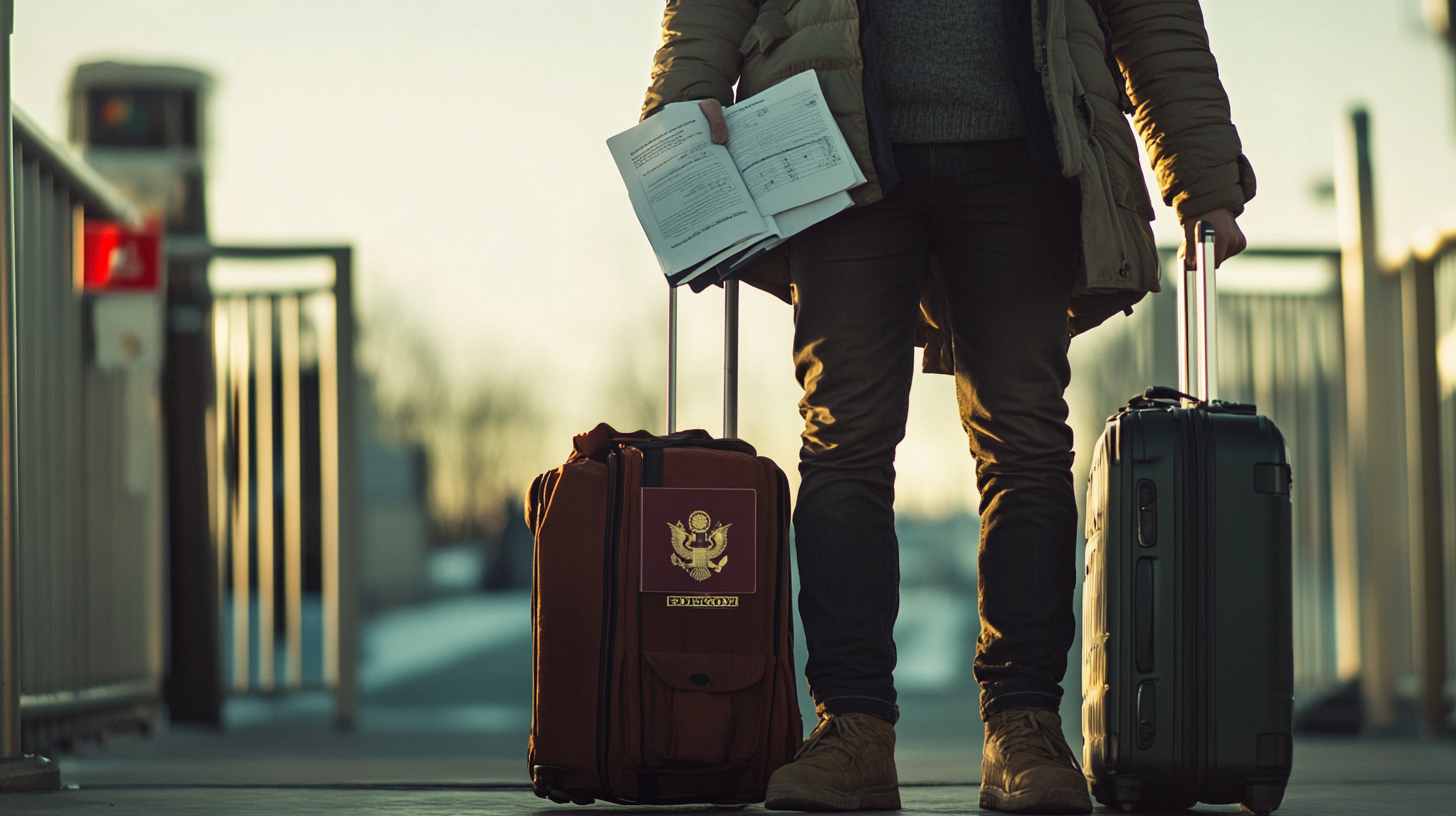Do You Need a Passport to Go to Canada?


Traveling to Canada is an exciting adventure for many U.S. citizens, offering a chance to explore stunning natural landscapes, vibrant cities, and a rich cultural heritage. Whether you’re planning a scenic road trip through the Rocky Mountains, a short flight to cosmopolitan cities like Toronto or Vancouver, or a cultural tour of historic sites in Quebec, understanding the entry requirements is crucial to ensure a smooth journey. This comprehensive guide will help you navigate the necessary documentation, answer the pressing question Do You Need a Passport to Travel to Canada , and provide valuable tips for your visit to our friendly northern neighbor.
Understanding Entry Requirements for U.S. Citizens

The Western Hemisphere Travel Initiative (WHTI)

Implemented in 2009 in response to evolving global security concerns, the Western Hemisphere Travel Initiative (WHTI) mandates that all travelers, including U.S. citizens, present a valid passport or equivalent document when entering Canada. This initiative was established to enhance border security while still facilitating the legitimate travel of U.S. citizens and residents across neighboring borders. It reflects a collaborative effort between the U.S. and Canada to balance security measures with the convenience of cross-border travel. For more detailed information about WHTI, visit Understanding the Western Hemisphere Travel Initiative .
Acceptable Travel Documents

It is essential to carry the appropriate documentation to avoid delays or issues at the border. While a traditional passport book is the most recognized form of identification, there are several alternatives acceptable under WHTI:
- Passport Book: The standard passport book is valid for all modes of travel—air, land, or sea. It’s recognized globally as official proof of identity and citizenship, making it the most versatile travel document. If you plan to travel internationally beyond Canada, a passport book is essential.
- Passport Card: The passport card is a convenient, wallet-sized alternative to the passport book. Designed for U.S. citizens who frequently cross the borders by land or sea into Canada, Mexico, the Caribbean, and Bermuda, it is not valid for international air travel. For detailed information on the differences, see Passport Book vs. Passport Card: Which is Right for You?
- NEXUS Card: The NEXUS program is a joint initiative between the U.S. and Canada that allows pre-screened travelers expedited processing by U.S. and Canadian border officials. A NEXUS card is valid for air, land, and sea travel between the two countries. It’s ideal for frequent travelers seeking a faster, smoother border-crossing experience. Learn more at NEXUS Program Details and Benefits
- Enhanced Driver’s License (EDL): An Enhanced Driver’s License provides proof of identity and U.S. citizenship. Available from certain states (Michigan, Minnesota, New York, Vermont, Washington), EDLs are valid for land and sea travel into Canada, Mexico, and some Caribbean countries. They are not valid for air travel. For more information on eligibility and application, see How to Obtain an Enhanced Driver’s License
Traveling by Different Modes of Transportation

Air Travel Requirements

Air travel to Canada requires stricter documentation due to international aviation security regulations. If you’re flying, you must present a valid passport book or a NEXUS card. It’s important to note that passport cards and Enhanced Driver’s Licenses are not accepted for air travel. Arriving at the airport without the proper documents can result in denied boarding, so double-check your identification before your departure.
Land and Sea Travel Requirements

Traveling by land or sea offers a scenic and leisurely way to reach Canada. Whether you’re embarking on a picturesque drive, hopping on a ferry, or taking a cross-border train journey, make sure you have one of the following acceptable documents:
- Passport book
- Passport card
- NEXUS card
- Enhanced Driver’s License
Remember, regardless of the mode of transportation, your documents must be valid and in good condition. Damaged or expired documents may result in denied entry. For instance, travelers have been turned away at the border due to water-damaged passports or illegible identification. To avoid such inconveniences, keep your documents safe and accessible throughout your journey.
Special Considerations for Travelers

Traveling with Minors

If you’re traveling with children under 16, they need to present proof of U.S. citizenship, such as a birth certificate (original or certified copy). For minors traveling with only one parent or guardian, a consent letter from the non-traveling parent is highly recommended and may be required. This letter should include contact information and a statement granting permission for the child to travel. In cases of shared custody, or if one parent has sole custody, carrying legal documents to support this is advisable. For detailed guidelines on traveling with minors, refer to Cross-Border Travel with Children: What You Need to Know .
Dual Citizens and Permanent Residents

U.S. citizens who are also Canadian citizens (dual citizens) have unique privileges. When entering Canada, they do not need a Canadian passport, visa, or Electronic Travel Authorization (eTA) as long as they present a valid U.S. passport. However, Canadian law requires all persons entering the country to carry proper identification and proof of citizenship. It’s recommended for dual citizens to have both passports available. Permanent residents of the U.S. may use a NEXUS card or their permanent resident card for expedited processing at the border. For more information, consult Travel Requirements for Dual Citizens and Permanent Residents .
Indigenous Peoples

Indigenous individuals, including members of First Nations, Inuit, and Métis communities, may have specific exemptions under agreements like the Jay Treaty. It’s advisable to check official guidelines and carry appropriate documentation, such as a Secure Certificate of Indian Status, if this applies to you.
Extended Stays and Visas

Visits Up to 180 Days

U.S. citizens can visit Canada for leisure without a visa for up to 180 days. Ensure your passport is valid for the duration of your stay and has at least one blank page. During this time, you can enjoy sightseeing, visit family and friends, and participate in business conferences or tourism activities. However, you are not permitted to work or study without the appropriate permits.
Stays Over 180 Days

If you plan to stay longer than 180 days, you must apply for a Visitor Record before entering Canada. This document extends your stay but does not authorize re-entry if you leave the country. It’s important to note that a Visitor Record allows you to stay longer but does not permit you to leave and re-enter Canada without reapplying. For detailed application procedures, consult How to Apply for a Canadian Visitor Record .
Additional Tips for a Smooth Trip

Health Insurance Considerations

Healthcare costs in Canada can be expensive for non-residents. While Canada has an excellent healthcare system, it is designed for Canadian citizens and permanent residents. Your U.S. health insurance, including Medicare, typically does not cover medical expenses incurred abroad. To protect yourself from unexpected medical costs, it’s prudent to check your current coverage and consider purchasing comprehensive travel medical insurance that includes coverage for emergency medical evacuation, which can be very costly. Review options at Travel Medical Insurance Plans for Visiting Canada .
Credit Cards and Banking

Financial transactions in Canada predominantly use the Chip & PIN system, which adds an extra layer of security to credit and debit card transactions. Before you depart, verify that your cards are equipped with this technology. Additionally, inform your bank and credit card companies of your travel dates and destinations to prevent any fraud alerts or holds on your accounts due to unusual activity. It’s also a good idea to carry some Canadian currency for small purchases and places that may not accept cards. For banking tips, see Managing Finances While Traveling in Canada .
Driving in Canada

Exploring Canada by car allows you to experience its vast landscapes and scenic routes at your own pace. Your valid U.S. driver’s license is acceptable for short-term visitors. Before driving, verify that your auto insurance policy provides coverage in Canada; many U.S. policies do, but it’s important to confirm the extent of coverage, including liability and collision. If your policy doesn’t cover you, consider purchasing temporary coverage. When renting a car, you’ll need a valid driver’s license, a credit card in your name, and be at least 21 years old, although rental companies may charge extra fees for drivers under 25. For more information, read A Guide to Driving in Canada for U.S. Visitors .
AAA Membership Benefits

If you’re a member of AAA, your benefits extend to Canada, offering assistance and exclusive travel discounts. AAA members can take advantage of reciprocal services provided by the Canadian Automobile Association (CAA). This includes roadside assistance, travel discounts on accommodations and attractions, and access to local maps and tour books. Before your trip, check with AAA to understand the full range of benefits available to you in Canada. Plan your trip with AAA Travel Services for Canada .
Important Reminders

- Damaged Documents: Ensure your travel documents are undamaged, legible, and up to date. Even minor damage, such as torn pages or water stains, can render a passport invalid and may cause significant delays or denial of entry.
- Firearms Regulations: Canada has strict firearms regulations. If you plan to bring firearms, you must declare them at the border and obtain the proper licensing and permits in advance. Unauthorized firearms will be confiscated, and you may face legal penalties, including arrest. For hunters or sport shooters, familiarize yourself with Canada’s Firearms Regulations for Visitors .
- Official Sources: Entry requirements and travel regulations can change. Always check official government websites, such as the U.S. Department of State and the Government of Canada’s travel pages, before your trip for the most current information. Utilize resources like Official Canada Travel Advisories to stay informed.
Final Thoughts

As you prepare for your Canadian adventure, remember to follow us back to Seat 5A for more travel tips and insights. Whether you’re marveling at the Northern Lights, attending a festival, or exploring historic sites, Canada’s wonders await.
Before you embark on your journey:
- Verify Your Documentation: A valid passport is the most universally accepted document. Ensure it is current and in good condition.
- Know Your Alternatives: Alternative documents like NEXUS cards and Enhanced Driver’s Licenses offer convenience but have specific limitations.
- Understand Mode-Specific Requirements: Entry requirements vary based on whether you travel by air, land, or sea. Be prepared with the correct documentation for your mode of travel.
- Consider Special Situations: Be aware of special considerations for minors, dual citizens, indigenous peoples, and those planning extended stays.
- Stay Informed: Regulations can change. Regularly check Current Entry Requirements for Canada before and during your trip.
With the right preparation, your Canadian adventure will be an unforgettable experience. Embrace the journey, and safe travels!
This blog post was AI-written / human assisted.






